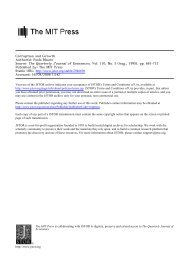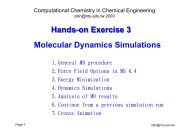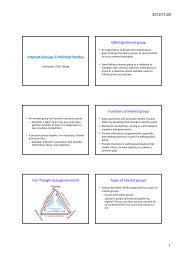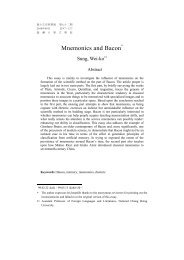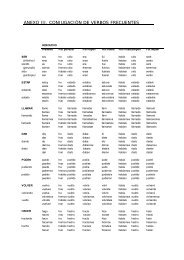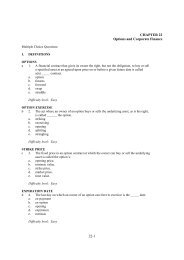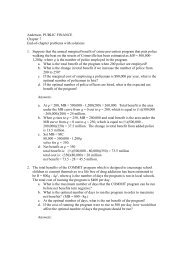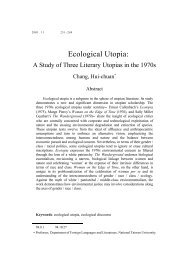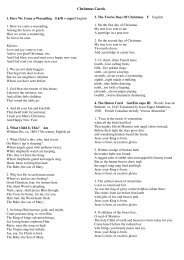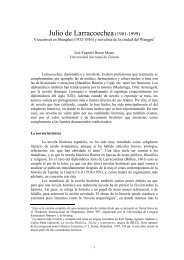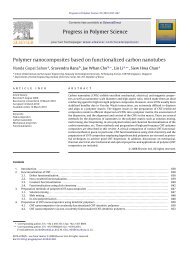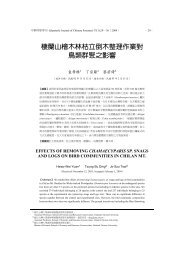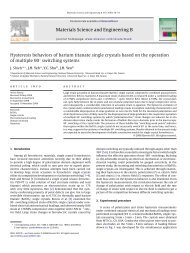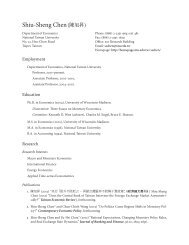Chapter 5 A Closed-Economy One-Period Macroeconomic Model
Chapter 5 A Closed-Economy One-Period Macroeconomic Model
Chapter 5 A Closed-Economy One-Period Macroeconomic Model
Create successful ePaper yourself
Turn your PDF publications into a flip-book with our unique Google optimized e-Paper software.
46 Williamson <strong>Macroeconomic</strong>s, Third Edition<br />
Problems<br />
1. Although we often think about the negative externalities of congestion and pollution in cities, there<br />
may also be some positive externalities. A concentrated population is better able to support the arts<br />
and professional sports; cities typically have a greater variety of good restaurants, etc. Perhaps a more<br />
basic issue is that there may be some increasing returns to scale at low output levels that make<br />
industrial production more costly in small towns. There may also be externalities in production in<br />
being located close to other producers. <strong>One</strong> example would be the financial industry in financial<br />
centers like New York, London, Tokyo, etc. Another example would be large city medical centers<br />
that enhance coordination between primary physicians and specialists.<br />
<strong>One</strong> market test of whether productivity is higher in cities would be to look at the wages in cities<br />
versus the wages in smaller towns and rural areas. Wages are often higher in cities for individuals of<br />
comparable skills. Market efficiency suggests that the higher wages be reflective of a higher marginal<br />
product of labor, and that the higher wages compensate those choosing to live in cities for the<br />
negative externalities that they face.<br />
2. In a one period model, taxes must be exactly equal to government spending. A reduction in taxes is<br />
therefore equivalent to a reduction in government spending. The result is exactly opposite of the case<br />
of an increase in government spending that is presented in the text. A reduction in government<br />
spending induces a pure income effect that induces the consumer to consume more and work less. At<br />
lower employment, the equilibrium real wage is higher because the marginal product of labor rises<br />
when employment falls. Output falls, consumption rises, employment falls and the real wage rises.<br />
3. The only impact effect of this disturbance is to lower the capital stock. Therefore, the production<br />
possibility frontier shifts down and the marginal product of labor falls (PPF is flatter).<br />
(a) The reduction in the capital stock is depicted in the figure below. The economy starts at point A<br />
on PPF 1 . The reduction in the capital stock shifts the production possibilities frontier to PPF 2 .<br />
Because PPF 2 is flatter, there is a substitution effect that moves the consumer to point D. The<br />
consumer consumes less of the consumption good and consumes more leisure. Less leisure also<br />
means that the consumer works more. Because the production possibilities frontier shifts down,<br />
there is also an income effect. The income effect implies less consumption and less leisure (more<br />
work). On net, consumption must fall, but leisure could decrease, remain the same, or increase,<br />
depending on the relative strengths of the income and substitution effect. The real wage must also<br />
fall. To see this, we must remember that, in equilibrium, the real wage must equal the marginal<br />
rate of substitution. The substitution effect implies a lower marginal rate of substitution. The<br />
income effect is a parallel shift in the production possibilities frontier. As the income effect<br />
increases the amount of employment, marginal product of labor must fall from point D to<br />
point B. This reinforces the reduction in the marginal rate of substitution from point A to point D.



